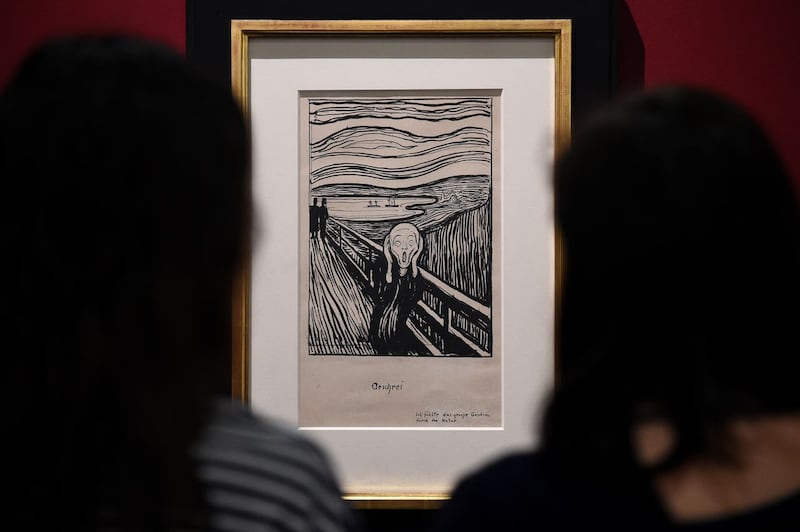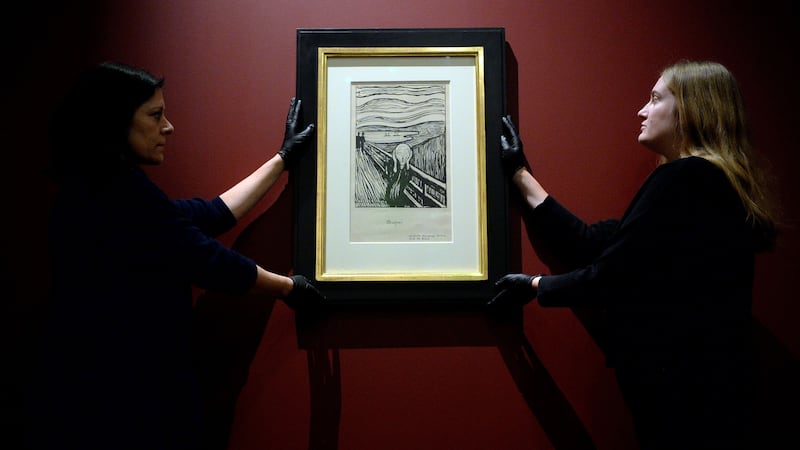A new Edvard Munch exhibition at the British Museum hopes to show visitors the human emotion behind one of the world’s most famous artworks.
The Scream has been installed as part of the collection which focuses on the Norwegian artist’s prints – the largest in the UK for 45 years.
On display is a rare black and white lithograph of his best-known work.
Although many know it now as a colourful painting, this version of The Scream is what shot Munch to fame during his lifetime.

The curator of the exhibition said the display of prints as well as paintings examines the original meaning behind his work.
Curator Giulia Bartrum told the Press Association: “The job of a museum curator is to look at the objects first of all and go back to the original source.
“When things are copied, re-copied, re-printed, retweeted, re-this, re-that, you just lose the original meaning of it.
“The whole purpose of this exhibition is to put The Scream into context with all of the other things he made, his other works of angst, loneliness, separation, because that’s how it was.
“He saw it all as one, in a group, his Frieze of Life – not just something to stand out on its own.”
Many people believe The Scream shows the artist, who died in 1944, screaming, but Ms Bartrum said this version makes it clear the figure shown is hearing a scream.
The lithograph includes a rare inscription absent in the colour version, with the English translation reading: “I felt a great scream pass through nature.”
This is the first exhibition the British Museum has dedicated to Munch, with 83 artworks on display, including Madonna – a painting depicting a swimming sperm and foetus.
“It shocked society at the time and that’s what he wanted to do – he wanted to sit up and say ‘Look, stop with knitting and reading, I don’t want knitting and reading anymore, this is what it feels like’,” the curator said.
“At the time, you have to think it was a deeply religious society. He wanted to shake society up and I think he achieved it.”
The exhibition is in collaboration with Norway’s Munch Museum, which has loaned nearly 50 prints from its collection.
Hartwig Fischer, director of the British Museum, said: “We are honoured that the Munch Museum in Oslo have sent us one of their biggest international loans of Munch’s prints, which can be seen alongside a number of key Munch works in the British Museum’s collection.
“Together, this survey of Munch’s pioneering art allows visitors to see why he is considered one of the greatest artists of all times.”
Edvard Munch: Love And Angst, supported by AKO Foundation, runs from April 11 to July 21 at the British Museum.








